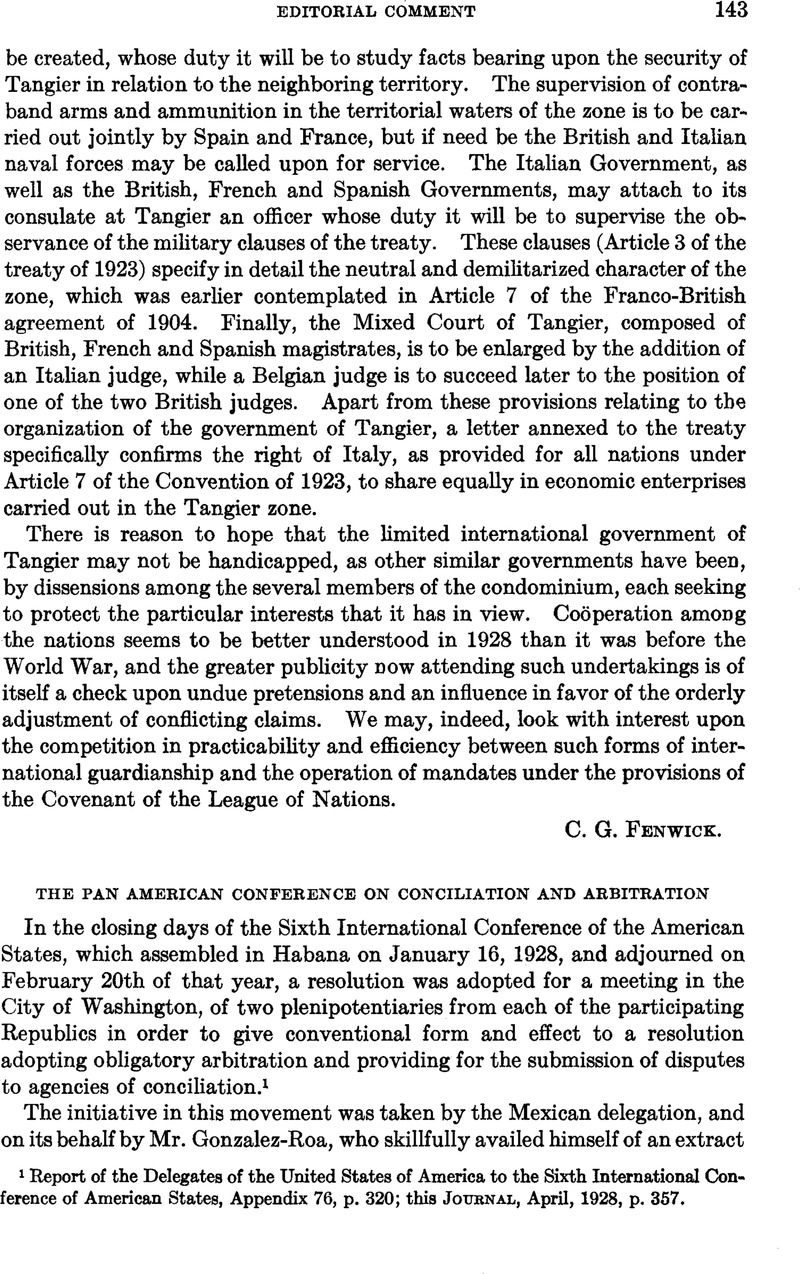Published online by Cambridge University Press: 06 June 2017

1 Report of the Delegates of the United States of America to the Sixth International Conference of American States, Appendix 76, p. 320; this Jotjbnal, April, 1928, p. 357.
2 “ . . . There are no international controversies so serious that they cannot be settled peaceably if both parties really desire peaceable settlement, while there are few causes of dispute so trifling that they cannot be made the occasion of war if either party really desires war. The matters in dispute between nations are nothing; the spirit which deals with them is everything.” Latin America and the United States-Addresses by Elihu Root. (Cambridge, 1917), pp. 228, 230-231.
3 Mr. Hughes thus expressed his views on January 3, 1929, when the question was under discussion in the Conference:
“ . . . We have in mind two fields of obligations: Those where the obligations are created in the exercise of sovereignty and which fall within the domestic jurisdiction; and, the other obligations, which are created by international law and which are not susceptible of final determination through local tribunals without the intervention of an appropriate international tribunal. In other words, where a treaty is concerned, for example, or matters which have given rise to rights under international law, the appropriate resort, if the parties cannot dispose of the controversy amicably, is to an international tribunal. We have sought to provide the means for constituting such a tribunal in this treaty.
“ So these two sources, domestic jurisdiction and international jurisdiction, stand separate, the one governed by the law of the sovereign state, the other governed by the international law which consists of those principles and rules which states have accepted as governing the relations that exist between them.
“ When we say in the first exception: ΄And are not controlled by international law,΄ we have obvious reference to those situations in which matters would otherwise fall within the domestic jurisdiction have, by reason of an international transaction, through treaty for example, become the subject of international consideration because they import international obligations.
“ . . . But perhaps I may be allowed to make the suggestion that under this treaty no state is deprived of any right that it has under international law, and no state, of course, is relieved of any obligation which it may have under international law.”